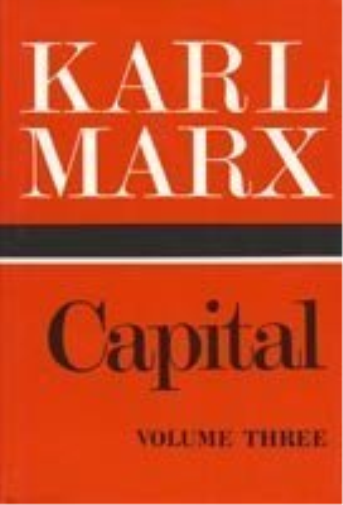Back to economic theory
Michael Roberts is an Economist in the City of London and a prolific blogger.
Cross-posted from Michael Roberts’ blog
The law of the tendential fall of the average rate of profit (LTRPF) lies at the very heart of Marxian economics. It is essential to explain all aspects of the capitalist economy, from economic crises to imperialism and the theft of international value inherent in imperialism. In short, it is essential for labour’s indictment of, and struggle, against capitalism.
It is thus not by chance that it has been the object of sustained attacks since the publication of the third volume of Capital.
One such critique that has gained some traction in Marxist circles is that by Marxists Emmanuel Farjoun and Moshe Machover in their book written in 1983 (and republished by Verso in 2020) called Laws of Chaos. They argue that Marx’s transformation of the values of commodities by the equalisation of individual rates of surplus value (profit) into prices of production based an average rate of profit for all capitals is indeterminate.
Supposedly, in Marx’s Capital 1, the price of a commodity is determined by the value contained in it (individual value), while in Capital 3 it is determined by its social value, the value it has after individual profit rates are modified by their equalization into an average. Thus values are converted into prices of production.
Like many other critics, Farjoun and Machover reckon that this conversion is inconsistent because prices of production would then not be uniquely determined by a quantity of value in labour time. Farjoun and Machover argue that Marx was wrong and Marxists must recognise that “there is no rigid relation between labour content and price. The ratio between price and labour content is a random variable, which can assume, for a given individual transaction, any positive numerical value whatsoever”. What Marx and the rest of us apparently need to recognise is that individual profit rates are not determined by any definite amount of value measured in labour time, but are ‘chaotic’ ie. ruled by the laws of probability. So there is no average rate of profit, but only a ‘scatter’ of profit rates.
In the paper attached, Determination and probability in Marx’s transformation ‘problem‘, my colleague Guglielmo Carchedi refutes this ‘chaotic’ theory of the relation between the value of commodities and prices of production. A scatter as a whole always has an average. It is an essential feature of any group of numbers. It arises necessarily from it and together with it. It follows that the average does not pre-exist the scatter. Each time a scatter arises or changes, the average rises or changes too. And a decreasing sequence of averages measures a decreasing average quantity of surplus value generated relative to the capital invested within a given time frame ie an average rate of profit. It is perfectly determinable and not ‘chaotic’.
Why does any of this matter? Well, if an average rate of profit on capital invested cannot be determined and instead is either non-existent or merely random, then this drives a hole through Marx’s law of the tendency of the rate of profit to fall (TRPF) and in turn, any compelling explanation of crises in capitalist production. However, in the attached paper, Carchedi shows that the ‘probabilistic approach’ is wrong and indeed a step backwards in Marxist theory.
Michael Roberts
“Brave New Europe is a font of knowledge and expertise on what is happening in Europe and in the wider world in economics, world events and on the planet’s future. Its radical perspective is essential in a world where the forces of reaction and division grow ever stronger.”
Donate: https://braveneweurope.com/donate




Be the first to comment